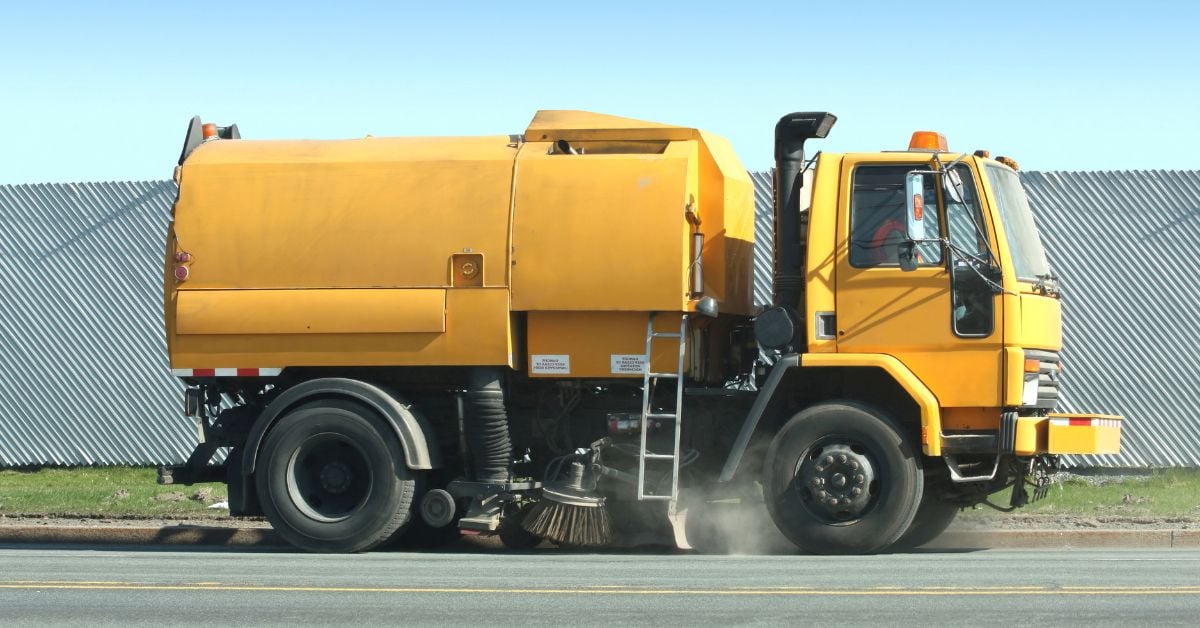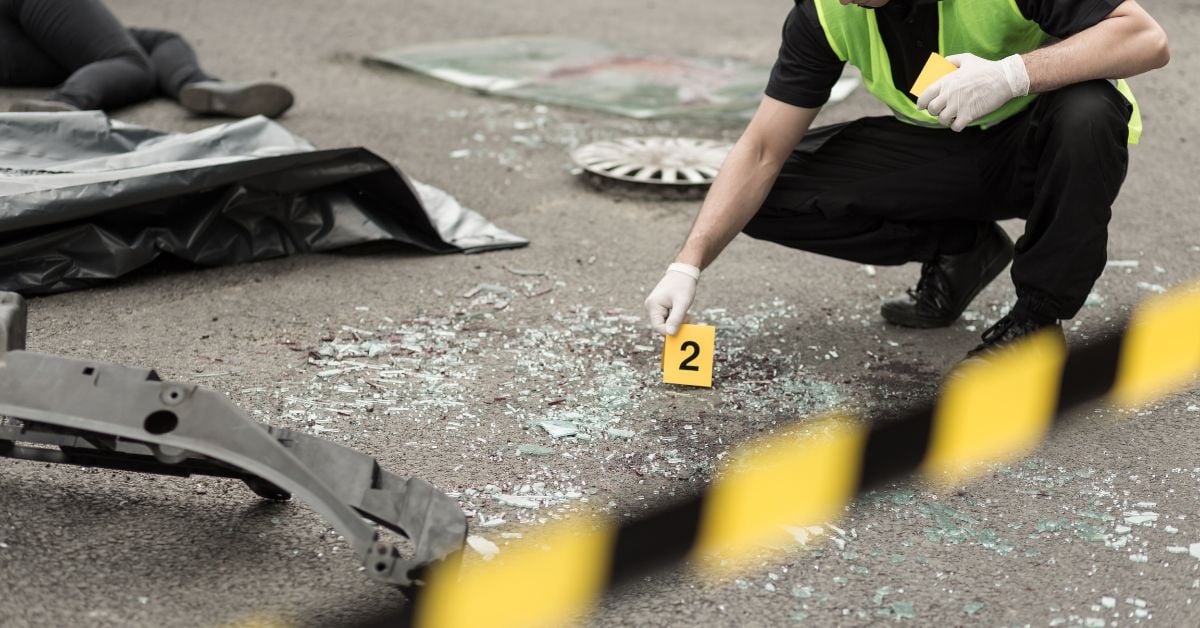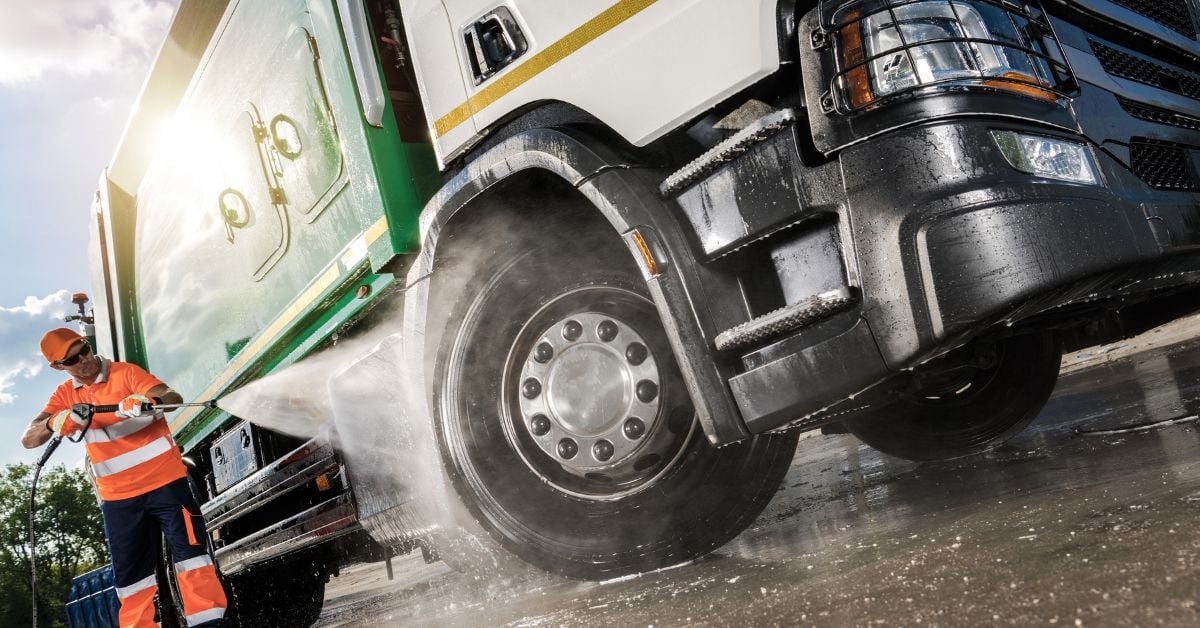
Have you ever had operators report "minor" incidents only to later receive a summons or complaint from those involved? It can be a surprise and leave you wondering what to do next. This article aims to provide practical information for power sweeping companies and their operators to implement in the event of an accident, helping to navigate the aftermath with confidence.
Procedures for Investigating an Accident

When responding to an accident, two primary concerns should be addressed: managing immediate issues and promptly gathering and reporting relevant information to your supervisor or central office. To ensure drivers are adequately prepared, a six-step accident procedure can be implemented, which can be adjusted based on the accident's severity. Drivers should refer to the following procedures to ensure the best possible outcome:
Step 1: In the event of an accident, remain calm and move your vehicle off the roadway safely. If the accident involves an unoccupied vehicle, attempt to locate the owner. If you cannot, leave a note with your name, address, phone number, company name, and contact information in a visible spot, such as under the windshield wiper blade. Additionally, make a note of the year, make, model, license plate number, and description of the other vehicle involved to provide to your company.
Step 2: Immediately activate your vehicle's four-way flashers to signal a warning. Quickly assess if there are any accident victims in need of attention. Then, per DOT regulations, place emergency warning devices in the designated positions on the roadway. These devices should be positioned within ten minutes of stopping.
Step 3: Assist those that are injured. Formal first aid training is not a requirement to assist with emergencies. Most states have "Good Samaritan" laws to protect untrained individuals who offer aid. In fact, many states require the first person to come upon an accident scene to stop and aid. If you find yourself at an accident scene, you may need to provide first aid or ensure someone else is available to do so. It is important to arrange for someone to call for medical assistance immediately.
At a minimum, do the following:
- Make sure any injured person is breathing. If not, lift the jaw and tilt the head back to open the airway (artificial respiration may be necessary).
- Check for any bleeding and apply direct pressure to any wound(s) if necessary.
- Cover any injured person to maintain body temperature.
- Never move a severely injured person unless they are in immediate danger of further injury.
Step 4: It is crucial to contact local law enforcement following an accident. If necessary, ask someone to do it for you. When providing information to the authorities, be polite and cooperative. Do not leave the scene of an accident unless you or someone else is unable to contact someone for help. Furthermore, refrain from admitting guilt or liability at the scene of an accident.
Step 5: It is important to document the accident and those involved by writing down their names, driver's license numbers, and other pertinent information. Additionally, it is recommended to create a simple diagram of the scene. Providing as much detail as possible to the company's safety department is beneficial for insurance and legal purposes. Taking photographs from various angles is highly recommended to document the situation. Remember, a picture can convey much more information than words alone.
Step 6: Once the vehicle has been secured, warning devices have been placed, any necessary assistance has been provided to injured persons, and law enforcement personnel have been contacted, the driver should communicate the accident to the company.
Drivers should be expected to gather the following information when contacting the company:
- Exact time and location of the accident
- Estimate of the injuries (if any) and/or damage to the vehicle(s) and property involved
- A location and/or contact information where you can be reached for further details and instructions
- Names and addresses of all persons involved in the accident
- Names and addresses of all insurance companies involved
- Year, make, model, and license numbers of all vehicles involved in the accident
If you cannot reach your company, contact the nearest office of the corporate insurance carrier and request that they contact your company on your behalf. Also, complete any accident report forms your company provides and keep them in each vehicle. These forms should be readily available at the scene of an accident.
Factors to Consider in Accident Investigations

It is crucial to impress upon your employees the importance of conducting thorough accident investigations and to be aware of the specific issues that management will prioritize in the inquiry. Above all, they must understand what changes in behavior are necessary to prevent future accidents from occurring. Typically, accident investigations should evaluate five significant areas, which will be fully explored after an initial assessment of the accident's severity.
Upon the first communication with the driver involved in an accident, the company should assess the appropriate level of official involvement required for the situation.
In some cases, an insurance adjuster representing the company may be dispatched to the accident scene to assist with on-site investigations and management of the accident's particulars. If deemed necessary after a thorough investigation, accident reconstruction may be performed by either the local authorities or the insurance carrier.
Accidents often result from a lack of adherence to correct procedures, and their causes can be categorized into five fundamental groups.
People: According to statistics, human error is responsible for 90% or more of all accidents. Therefore, investigations should encompass an evaluation of the qualifications of the driver(s) involved in the accident. This should include, but not be limited to questions like:
- Was the driver qualified according to company policy and federal/state requirements?
- Did the driver have the proper training?
- Has the operator completed the NAPSA Certified Sweeper Operator Training Program?
- Was the driver new to the job?
- Was the driver working within the guidelines of a specific job description?
- Was the driver under pressure or tired?
- Did the driver receive clear instructions and directions?
- Was the vehicle involved in the accident the driver's regularly assigned vehicle?
Equipment: Much attention should be focused on the mechanical function of the vehicle involved. That assessment should include questions like:
- Was the equipment serviced regularly?
- Are there maintenance records to verify that major components have been serviced and repaired (if required) during the past year?
- Was the maintenance facility adequately staffed and budgeted to properly support the company's maintenance standard?
- Was the equipment spec'ed for the loads it was carrying?
- Were any defects not reported or repaired?
Physical Conditions: Even though environmental conditions are rarely the primary cause of an accident; such conditions may play a role in the responses of both vehicle and driver. Investigation in this area will include questions like the following:
- Was traffic congested?
- Was the highway slippery (wet or icy)?
- Was it foggy at the time of the accident?
- What time of day did the accident occur?
Procedures: Were there written procedures to be followed by the dispatcher, driver, mechanic, etc., that would have alerted them to any hazards present? The investigation will key on the presence of such policies and should include the following questions:
- Were all company policies being followed at the time of the accident?
- Have all individuals involved been properly trained in existing procedures?
- Was the "procedure" training effective?

Accidents are a potential hazard that every power sweeping company must be prepared to handle. Implementing the tips and strategies outlined can help equip your operators with the necessary knowledge and skills to navigate an accident effectively. By emphasizing prevention and establishing clear protocols for a response, you can help minimize the impact of accidents on your operations and ensure the safety of your drivers and other road users. Remember that being proactive in preparing for accidents is crucial, and taking the necessary steps today can help prevent serious repercussions in the future.
Get Started with a Free consultation
Creating a custom insurance or benefits package is critical for companies of all sizes.